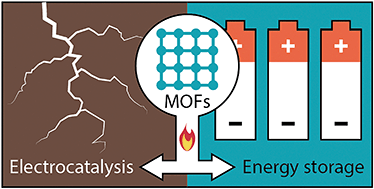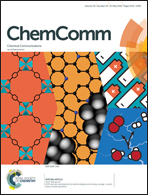MOF-derived nanohybrids for electrocatalysis and energy storage: current status and perspectives
Abstract
More than 20 000 MOFs have been reported to date, with different combinations of metal ions/centers and organic linkers, and they can be grown into various 3D, 2D, 1D and 0D morphologies. The flexibility in control over varying length scales from atomic scale up to bulk structure allows access to an almost endless variety of MOF-based and MOF-derived materials. Indeed, MOFs themselves have been studied as a class of useful functional materials. More remarkably, extensive research conducted in recent years has shown that MOFs are exceptionally good precursors for a large variety of nanohybrids as active materials in both electrocatalysis and energy storage. As they already contain both carbon and well-dispersed metal atoms, MOFs can be converted to conductive carbons decorated with active metal species and doping elements through appropriate pyrolysis. Due to the great diversity accessible in the composition, structure, and morphology of MOFs, several types of MOF-derived nanohybrids are now among the best performing materials both for electrocatalysts and electrodes in various energy conversion and storage devices. In addition to mesoporous nano-carbons, both doped and undoped, carbon–metal nanohybrids, and carbon-compound nanohybrids, there are several types of core@shell, encapsulated nanostructures, embedded nanosystems and heterostructures that have been developed from MOFs recently. They can be made in either free-standing forms, nano- or micro-powders, grown on appropriate conducting substrates, or assembled together with other active materials. During the MOF to active material conversion, other active species or precursors can be inserted into the MOF-derived nanostructures or assembled on surfaces, leading to uniquely new porous nanostructures. These MOF-derived active materials for electrocatalysis and energy storage are nanohybrids consisting of more than functional components that are purposely integrated together at desired length scales for much-improved performance. This article reviews the current status of these nanohybrids and concludes with a brief perspective on the future of MOF-derived functional materials.



 Please wait while we load your content...
Please wait while we load your content...